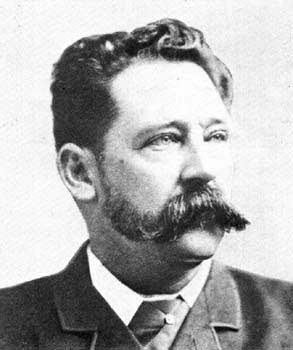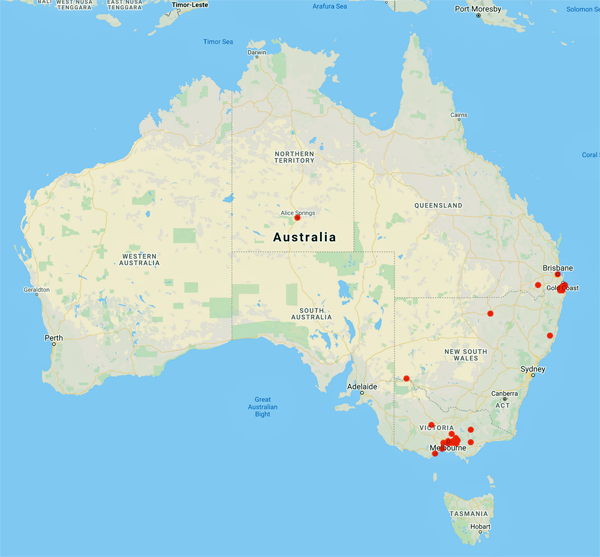
Council of Heads of Australasian Herbaria
Australian National Herbarium
Biographical Notes
 |
Council of Heads of Australasian Herbaria |
 Guilfoyle,
William Robert (1840 - 1912)
Guilfoyle,
William Robert (1840 - 1912)GUILFOYLE, landscape gardener and botanist, was born on 8 December 1840 at Chelsea, England, son of Michael Guilfoyle (d. 1884), nurseryman, and his wife Charlotte, née Delafosse, of Huguenot origin. His father migrated to Sydney with his family in 1853 and set up a nursery at Redfern; another at Double Bay was more successful. After private teaching by his uncle, Louis Delafosse, William attended Lyndhurst College, Glebe, and was encouraged in botanical study by W. S. Macleay and John MacGillivray . He made several tours in northern New South Wales and Queens-land collecting specimens, some of which he sent to Ferdinand Mueller in Melbourne to be identified. In 1868 he joined the scientific staff of H.M.S. Challenger in its scientific expedition through the South Sea islands, and then grew sugar and tobacco on his father's land near the Tweed River.
On 21 July 1873 Guilfoyle was appointed curator of the Royal Botanic Gardens, Melbourne, at a salary of £500. His predecessors, Dallachy and Mueller, had been more interested in developing the gardens for scientific than aesthetic and recreational purposes. Guilfoyle, inspired by the tropical landscapes he had seen, extended and remodelled the gardens. When he designed an extension he made a coloured sketch of his conception and then by a process of improvement brought it to the planting stage.
Sweeping lawns, cunningly planned foliage and informal vistas filled the area which was expanded to over one hundred acres. When the south bank of the Yarra was straightened to prevent floods Guilfoyle secured the adjoining section and transformed a billabong into a series of lakes. He created a fern gully in a hollow and on a hill overlooking the Yarra built a Temple of the Winds as a memorial to LaTrobe, founder of the gardens. The temple was designed in the classical tradition but instead of the usual acanthus motif Guilfoyle used the native staghorn fern. He also designed several summer houses or kiosks. Paderewski, who planted an American red chestnut to mark his visit on 26 October 1904, remarked that Guilfoyle did with his trees what a pianist tried to do with his music. Conan Doyle claimed that the gardens were 'absolutely the most beautiful place' that he had ever seen. Guilfoyle also managed the 62 cultivated acres of the Government House land and 156 acres in the outer Domain. He also designed private gardens; probably the best known is at Coombe Cottage, Dame Nellie Melba's home at Coldstream, near Lilydale. Melbourne's Botanic Gardens had gained world-wide repute before Guilfoyle retired in September 1909. He then lived at Jolimont and is credited with the attractive treatment of the creek which runs through Fitzroy Gardens. In 1890-91 and 1896 he visited England and Europe.
Guilfoyle did not neglect botanical studies in order to indulge his genius for land-scape gardening. He started the medicinal ground in the gardens and also grew plants of economic value. His publications included First Book of Australian Botany (1874), revised and reissued as Australian Botany especially designed for the Use of Schools (1878); The A.B.C. of Botany (1880); Australian Plants (1911 ?) and many pamphlets.
Guilfoyle died on 25 June 1912 at East Melbourne, survived by his wife Alice, nee Darling, whom he had married at Melbourne in 1888 and by their only son William James. His brother John was curator of the reserves under the Melbourne Metropolitan Parks and Gardens Committee in 1891-1909.
Source: Australian Dictionary of Biography 1851-1890
Data from 410 specimens
